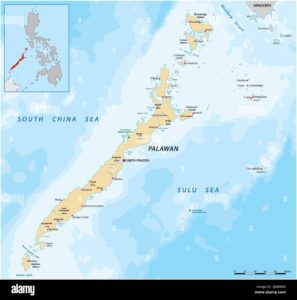
Quali sono le epidemie attuali in India?
NOVEMBRE 2025: MALARIA , DENGUE E CHIKUNGUNYA A DELHI
Delhi sta attraversando una fase particolare per quanto riguarda le malattie trasmesse dalle zanzare. Chi arriva in città in questo periodo deve sapere che malaria e dengue non stanno seguendo lo stesso andamento: mentre la dengue mostra una netta flessione, i casi di malaria sono tornati a crescere rispetto agli ultimi anni.
Malaria: un ritorno da non sottovalutare
Nel solo mese di novembre, la capitale indiana ha segnalato 67 casi di malaria, il dato più alto degli ultimi quattro anni. Per fare un confronto: erano stati 57 nel 2024, 26 nel 2023 e appena 7 nel 2021.
Dall’inizio del 2025, il totale è salito a 690 casi, un valore simile a quello dello scorso anno ma decisamente superiore a quanto osservato nel 2023.
Il picco è iniziato ad agosto e ha continuato a salire tra settembre e ottobre, quando sono stati registrati rispettivamente 203 e 252 casi. Al momento non risultano decessi associati alla malattia, secondo la Municipal Corporation of Delhi.
Le zone che nelle ultime settimane hanno mostrato la maggiore concentrazione di casi sono West, South e Civil Lines, insieme responsabili di oltre la metà delle nuove segnalazioni.
Dengue: numeri in miglioramento
La dengue segue un percorso opposto. Nel 2025 i casi sono sensibilmente diminuiti, con 1.309 infezioni registrate finora, a fronte dei quasi 5.000 dell’anno precedente e dei più di 7.000 del 2023. Restano comunque due decessi confermati dall’inizio dell’anno.
Il periodo più critico è stato, come di consueto, tra settembre e ottobre, quando la città ha toccato il suo picco stagionale (1.749 casi a settembre e 1.994 a ottobre).
Nell’ultima settimana monitorata, le aree più colpite sono risultate East, South e Najafgarh, che insieme hanno generato oltre il 60% dei nuovi casi.
Chikungunya, in calo
Inoltre, finora questo mese sono stati segnalati 23 casi di Chikungunya, un numero significativamente inferiore rispetto ai 75 casi registrati nel novembre 2024, ma superiore ai 15 casi registrati nel novembre 2023, ai 4 del 2022 e agli 8 del 2021.
Finora quest’anno, la città ha segnalato 156 casi di Chikungunya, un numero inferiore ai 192 casi registrati nello stesso periodo dell’anno scorso, secondo i dati.
Cosa significa per il viaggiatore
-
L’andamento delle malattie “stagionali” a Delhi resta variabile, con malaria in risalita e dengue e chikungunya in calo.
-
Alcune zone della capitale mostrano una maggiore concentrazione di casi, un’informazione utile per chi pianifica spostamenti urbani.
-
Come sempre, in questa stagione è consigliabile prestare attenzione alle misure di protezione personale contro le punture di zanzara, specialmente al crepuscolo e nelle aree verdi o vicino a corsi d’acqua, effettuare una corretta profilassi antimalarica e vaccinarsi per la Dengue e per la Chikungunya, se consigliato da un medico esperto.
MARZO 2025: CHIKUNGUNYA
In India, tra il 1° gennaio e il 31 marzo 2025, sono stati segnalati complessivamente 30 876 casi sospetti e 1741 casi confermati. Gli Stati che hanno segnalato il numero più elevato di casi confermati sono stati il Maharashtra, il Karnataka e il Tamil Nadu.Casi della febbre virale emorragica, particolarmente acuta, sono stati segnalati negli altopiani centro meridionali del Sub Continente Indiano. I casi sono continuati durante tutto l’anno dall’ottobre 2022 e si sono mantengono per il persistere delle piogge durante la stagione invernale. La lotta alla zanzara, la protezione ambientale, l’utilizzo di repellenti efficaci e l’utilizzo delle zanzariere costituiscono la prima linea efficace di protezione.
GENNAIO 2025 DENGUE
A gennaio 2025, la situazione della dengue in India mostra un trend di lieve diminuzione dei casi rispetto ai picchi raggiunti nel 2024. Tuttavia, la malattia continua a rappresentare una preoccupazione significativa per la salute pubblica, specialmente in alcune regioni.
Situazione della dengue a gennaio 2025
Casi recenti: Durante la prima settimana di gennaio 2025:
– Kerala ha riportato 119 nuovi casi di dengue;
– Karnataka ha registrato un aumento significativo con 93 nuovi casi nella seconda settimana.
Questo segna un incremento del 389% rispetto alla settimana precedente, ma i numeri complessivi rimangono inferiori ai picchi precedenti.
Mortalità: Fino a gennaio 2025, non sono stati segnalati decessi recenti legati alla dengue in queste regioni, suggerendo che le misure di controllo stanno avendo successo nel contenere la malattia.
Situazione nel 2024 Nel corso del 2024, l’India ha affrontato un numero significativo di casi di dengue:
Casi totali: Fino al 31 ottobre 2024, sono stati riportati 186.567 casi e 160 decessi. Questo rappresenta un aumento rispetto all’anno precedente, quando i casi erano stati circa 160.000 nello stesso periodo;
Distribuzione geografica: Le regioni più colpite sono state Kerala e Karnataka.
In Kerala, sono stati registrati circa 20.550 casi nel 2024,
in Karnataka ha visto circa 32.789 casi nello stesso anno.
Delhi: Ha riportato più di 4.000 casi durante l’anno, con una mortalità di circa undici decessi.
Entrambe le aree hanno mostrato un trend di diminuzione dei casi verso la fine dell’anno;
Mortalità: La mortalità totale per dengue nel 2024 è stata di circa 160 decessi in India. Questa cifra è relativamente bassa rispetto agli anni precedenti, ma rimane una preoccupazione per le autorità sanitarie.
Stati maggiormente colpiti
DICEMBRE ’24 – GENNAIO ’25 VIRUS NIPHA
rappresenta una delle principali preoccupazioni sanitarie in India all’inizio del 2025:
– Si sono verificati casi mortali nella regione del Kerala, con due vittime confermate negli ultimi mesi.
– Le autorità hanno imposto misure di contenimento come chiusura di scuole e obbligo di mascherine in alcune zone.
– Il virus ha un’alta mortalità, con tassi tra il 40% e il 75%.
– Si trasmette principalmente dai pipistrelli e maiali agli esseri umani, ma è possibile anche la trasmissione da persona a persona
I casi animali sono stati in aumento in tutto il 2024. Anche i casi umani hanno avuto un aumento nell’ultimo trimestre del 2024. Nel settembre 2024 si è verificato un focolaio nel distretto di Kozhikode, Kerala:
6 casi confermati, 2 decessi, 1288 contatti identificati e messi in quarantena
La trasmissione avviene attraverso diverse vie:
Da animale a uomo: – Contatto diretto con animali infetti, principalmente pipistrelli della frutta (genere Pteropus) e maiali. – Consumo di alimenti contaminati da fluidi corporei di animali infetti, come:
– Frutta contaminata dalla saliva di pipistrelli
– Linfa di palma da dattero cruda
Da uomo a uomo: attraverso il contatto ravvicinato con persone infette o i loro fluidi corporei.
– Trasmissione attraverso goccioline respiratorie.
– Particolarmente comune tra familiari e operatori sanitari che assistono pazienti infetti.
Tra i focolai di malattie infettive diffuse in più stati sia del Nord che del Centro sud:
• Leptospirosi: Ha causato un significativo aumento dei decessi, rappresentando circa un terzo di tutte le morti per malattie infettive nel 2024. In prevenzione e cura utile la doxiciclima.
• Dengue: Come sopra riportato, nonostante una leggera riduzione dei decessi, da 153 nel 2023 a 99 nel 2024, rimane una preoccupazione in molti stati
• Tubercolosi (TB): L’India ha il 25% del carico globale di TB. Il governo mira all’eliminazione entro il 2025, con progressi significativi nella riduzione dell’incidenza e della mortalità
• Malaria: Continua a essere una minaccia significativa, specialmente nelle regioni sub-sahariane ,dell’India5
GENNAIO ’25 ENCEFALITE GIAPPONESE
Nel 2024, l’encefalite giapponese (EJ) in India ha continuato a rappresentare un problema di salute pubblica significativo, con una distribuzione geografica diffusa e caratteristica stagionale spiccata.
Diffusione geografica: L’encefalite giapponese è stata riportata in 24 stati e territori dell’Unione Indiana nel 2024. Gli stati più colpiti includono:
– Assam: Ha registrato il maggior numero di casi, con 925 su un totale di 1.548 casi segnalati in tutto il paese.
– Uttar Pradesh: Storicamente una delle aree più colpite, ha visto un miglioramento significativo, con zero morti per encefalite nel 2024.
– Bihar: Continua ad essere uno degli stati ad alto rischio.
– Altri stati endemici:
Jharkhand,
Madhya Pradesh,
Chhattisgarh,
Andhra Pradesh,
Telangana,
Karnataka,
Tamil Nadu,
West Bengal,
e stati del Nord-Est come Manipur, Meghalaya, Nagaland.
Andamento stagionale
L’encefalite giapponese in India segue un pattern stagionale caratteristico:
– Picco stagionale: La trasmissione aumenta durante la stagione dei monsoni (luglio-agosto) e il periodo post-monsone (ottobre-novembre).
– Periodo di maggior rischio: Le epidemie tipicamente si verificano da luglio a ottobre, con un picco durante la stagione delle piogge.
Questo andamento è legato all’aumento delle popolazioni di zanzare e dei luoghi di riproduzione durante questi periodi.
Dati epidemiologici nel 2024, secondo i dati del Programma Integrato di Sorveglianza delle Malattie (IDSP):
– Totale casi riportati: 1.548 in 24 stati e territori dell’Unione.
– Assam ha registrato il 60% dei casi totali (925 su 1.548).
GENNAIO 2025: MALARIA
L’innalzamento progressivo delle temperature e dell’umidità, dopo il periodo invernale fresco e con poche zanzare, porta all’aumento della diffusione della Anopheles con il propagarsi di malattie di origine parassitario (Plasmodio). Dopo un progressivo abbassamento di casi di malaria dal 2015 al 2019 e dopo 3 anni di pandemia Covid-19, in modo anomalo si è verificato un aumento di casi di malaria, anche mortali, in aree del paese ad altitudine superiore ai 1800 metri. VEDI LA SEZIONE MALARIA DELLA SCHEDA
Nella regione dell’Asia sudorientale, per l’OMS, tre paesi continuano a rappresentare il 98% del totale dei casi segnalati nella regione. L’India con il 58% di casi rappresenta il primo paese dell’area, seguita dall’ Indonesia, con il 30% ed il Myanmar con il 10%. Secondo il WMR 2019, l’India rappresentava il 3% del carico globale della malaria nel mondo. Nel 2019, nonostante il paese mostrasse il più alto carico di malaria della regione SEA, mostrava anche una importante riduzione dei casi di malaria segnalati del 49% e dei decessi del 50,5% rispetto al 2017. I mancati controlli del territorio ed anche l’attenzione delle persone durante la pandemia ha contribuire a far nuovamente diffondere e crescere i casi di malaria nella maggior parte dei paesi. Sia nelle grandi pianure del nord che nelle grandi città, ma anche lungo gli altopiani centro meridionali ed in tutti i paesi rivieraschi.
Il fenomeno é presente ed è cresciuto nel triennio del Covid-19. Chi si reca in India deve informarsi delle aree di presenza della zanzara Anopheles, difendersi dalla puntura delle zanzare e non esporsi al rischio di puntura.
NOVEMBRE 2024: ADENOVIROSI – malattie respiratorie superiori. Mortalità elevata nei bambini fino a 9 anni.
Si mantiene elevato anche il numero dei casi di morbillo presenti nella maggior parte delle province del paese.







 La presenza di persone in aree dense di animali facilita l’insorgere di malattie legate al morso delle zecche. Artropodi, ordine degli Ixodidi, sono comprese nella classe degli Aracnidi, la stessa classe di ragni, acari e scorpioni. Le zecche sono parassiti esterni della dimensione da qualche millimetro a circa 1 centimetro, secondo la specie e lo stadio di sviluppo. Le zecche succhiano dal sangue degli animali diversi microrganismi, tra virus e batteri. In particolare, è presente Rickettsia Mooseri. Il tifo esantematico è la malattia che si può sviluppare, e questo batterio è in grado di diffondere tramite il sistema linfatico. La diagnosi deve essere rapida e la terapia pronta. Nel 2023 in diverse aree della nazione ed anche a Zanzibar abbiamo assistito alla diffusione di zecche e di conseguenza della malattia.
La presenza di persone in aree dense di animali facilita l’insorgere di malattie legate al morso delle zecche. Artropodi, ordine degli Ixodidi, sono comprese nella classe degli Aracnidi, la stessa classe di ragni, acari e scorpioni. Le zecche sono parassiti esterni della dimensione da qualche millimetro a circa 1 centimetro, secondo la specie e lo stadio di sviluppo. Le zecche succhiano dal sangue degli animali diversi microrganismi, tra virus e batteri. In particolare, è presente Rickettsia Mooseri. Il tifo esantematico è la malattia che si può sviluppare, e questo batterio è in grado di diffondere tramite il sistema linfatico. La diagnosi deve essere rapida e la terapia pronta. Nel 2023 in diverse aree della nazione ed anche a Zanzibar abbiamo assistito alla diffusione di zecche e di conseguenza della malattia.



